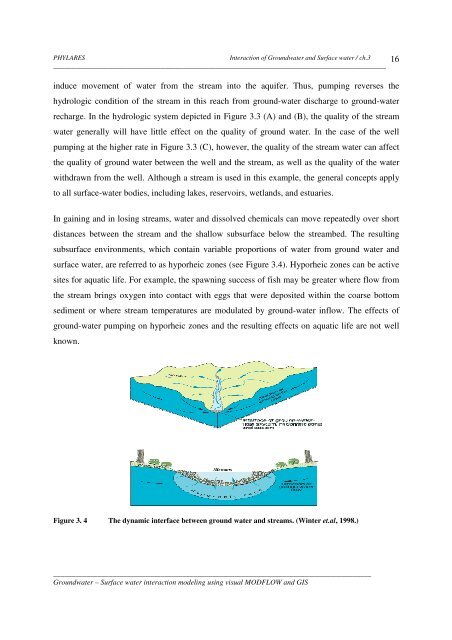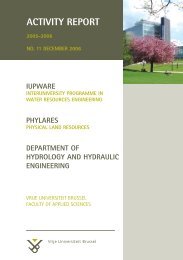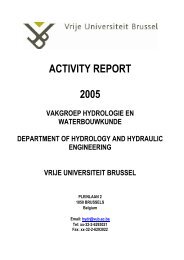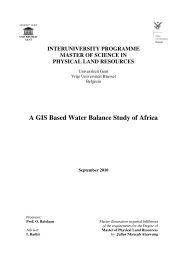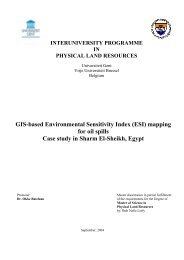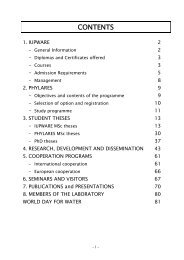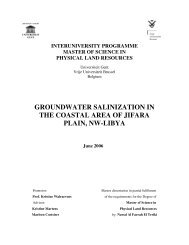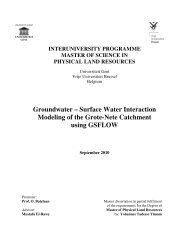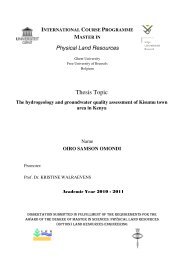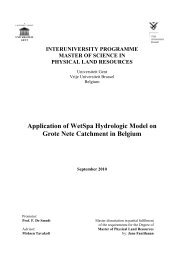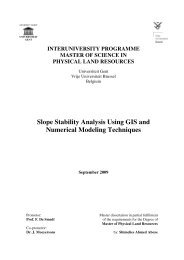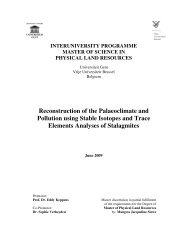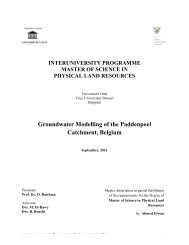Surface Water Interaction Modelling Using Visual MODFLOW and GIS
Surface Water Interaction Modelling Using Visual MODFLOW and GIS
Surface Water Interaction Modelling Using Visual MODFLOW and GIS
- No tags were found...
You also want an ePaper? Increase the reach of your titles
YUMPU automatically turns print PDFs into web optimized ePapers that Google loves.
PHYLARES<strong>Interaction</strong> of Groundwater <strong>and</strong> <strong>Surface</strong> water / ch.3__________________________________________________________________________________________16induce movement of water from the stream into the aquifer. Thus, pumping reverses thehydrologic condition of the stream in this reach from ground-water discharge to ground-waterrecharge. In the hydrologic system depicted in Figure 3.3 (A) <strong>and</strong> (B), the quality of the streamwater generally will have little effect on the quality of ground water. In the case of the wellpumping at the higher rate in Figure 3.3 (C), however, the quality of the stream water can affectthe quality of ground water between the well <strong>and</strong> the stream, as well as the quality of the waterwithdrawn from the well. Although a stream is used in this example, the general concepts applyto all surface-water bodies, including lakes, reservoirs, wetl<strong>and</strong>s, <strong>and</strong> estuaries.In gaining <strong>and</strong> in losing streams, water <strong>and</strong> dissolved chemicals can move repeatedly over shortdistances between the stream <strong>and</strong> the shallow subsurface below the streambed. The resultingsubsurface environments, which contain variable proportions of water from ground water <strong>and</strong>surface water, are referred to as hyporheic zones (see Figure 3.4). Hyporheic zones can be activesites for aquatic life. For example, the spawning success of fish may be greater where flow fromthe stream brings oxygen into contact with eggs that were deposited within the coarse bottomsediment or where stream temperatures are modulated by ground-water inflow. The effects ofground-water pumping on hyporheic zones <strong>and</strong> the resulting effects on aquatic life are not wellknown.Figure 3. 4 The dynamic interface between ground water <strong>and</strong> streams. (Winter et.al, 1998.)______________________________________________________________________________________Groundwater – <strong>Surface</strong> water interaction modeling using visual <strong>MODFLOW</strong> <strong>and</strong> <strong>GIS</strong>


